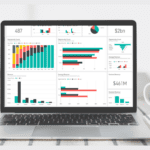Valuing Assets & Cash Flows
When I do a company valuation, I’ve heard that I should model the value based on cash flows then add the asset values to get the total value. Is this correct?
By Jeff Robson
Valuation Models
There are two main types of valuation models: asset-based and flow based.
| Asset-Based | Flow-Based | |
| Concept | Comparison with recent asset sales, benchmarks, listed companies | Value of assets derived from cash flows they generate |
| Uses | – Valuing surplus assets – Liquidations – Start-ups – Exploration companies |
– Valuing ongoing businesses |
| Methods | – Benchmarks: eg rental yield, $/oz reserves, $/sqm – Replacement costs (eg software startup) – Similar asset sale price |
– Earnings multiples – % of sales – Discounted cash flow – Real options – Dividend yield |
Why use Flow-Based Valuations?
A common question is: why use flow-based valuations? Why isn’t the value of a business simply the sum of the value of its assets?
The answer is that in many situations, the value of the business is far greater than the sum of the value of its assets.
Why?
Because the primary value of many businesses is intangible. This could include things we traditionally think of as intangibles such as trademarks, patents, logos etc but also business systems, culture, and talented staff.
The business has value because of the way in which it uses its assets to generate cash flows. That’s where it derives its value!
So, with a normal, ongoing business that uses all its assets to generate cash flows, we would usually expect to use a flow-based valuation model, such as discounted cash flow (DCF).
Here, the value of the business is derived from the cash flows it generates from its assets, not the sum of its asset values.
You would then normally check your DCF valuation with a valuation based on earnings (eg EBIT or net profit after tax [P/E] multiple). This effectively compares the value to a reasonably similar company.
The two valuation methods should be approximately equal. If not, you may need to examine the reasons for the differences.
Surplus Assets
A company may have surplus assets i.e. assets that aren’t used directly in the generation of profit. One example could be a parcel of land held as an investment.
In this situation, the land isn’t generating cash flows so a flow-based valuation methodology isn’t appropriate.
We value this type of asset by looking at recent comparable sales or by applying industry benchmarks (eg a rate per square metre/foot).
Therefore, the total value of a business is:
Total Value = DCF Valuation + Surplus Assets Value
Invest for Excel – financial modelling software




